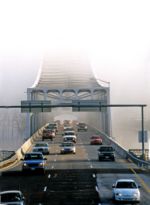Category:700 STRUCTURES AND HYDRAULICS
A bridge is a structure spanning a minimum of 20 ft. grade separation or crossing water. There are about 10,000 bridges in Missouri's state highway system. Bridges are described as simple or continuous and according to structure type and material.
Once the need concerning a bridge structure is identified in a project then a core team is established, the scope of the project is developed, a bridge survey is submitted and preliminary design begins. The bridge need could involve rehabilitating or widening an existing structure or building a new structure or retaining wall. There is no perfect bridge type for all situations. With Practical Design, engineers are expected and encouraged to consider and evaluate all potential solutions and project factors that ultimately impact the cost of the structure. However, any variations to the information in this guide should be discussed in advance with the appropriate Structural Liaison Engineer or Structural Project Manager.
As used in the highway environment, hydraulics is that branch of engineering concerned with the flow of water. Hydraulics includes the gutters, ditches, and storm sewer systems that remove rainfall runoff from a highway and also includes the flow in a waterway traversed by a highway consisting of open channels, culverts and bridges. Hydraulic design frequency and design criteria are based on federal and state laws and regulations, safe operation of the highway facility and impact to adjacent property owners. Hydraulic structures are typically designed for high flow events, although specific projects may also have low flow criteria.
| EPG articles are not referenced as "sections" but as EPG XXX.X or "articles" to avoid confusion with MoDOT specs. |

